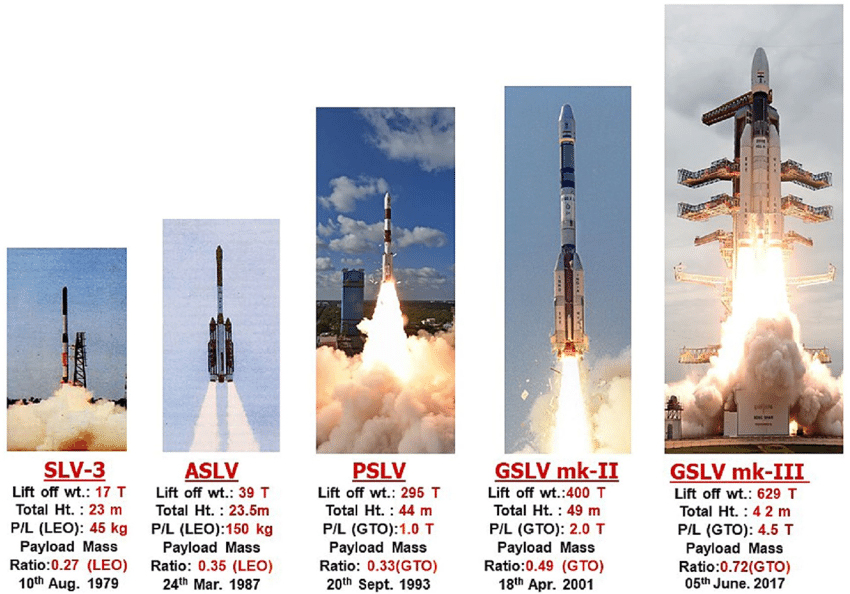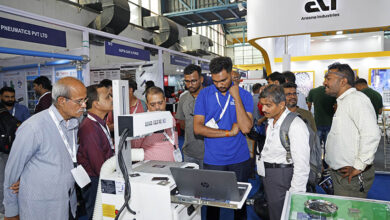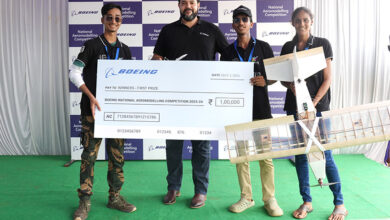The Decade – A TECHADE in Space Technology
- Space Exploration and Innovation
By R Anil Kumar
Bangalore, June 20. India Strategic takes a peek into the Technological innovations and advancements made by the Indian Space Agency, Indian Space Research Organisation (ISRO), ever since its inception, and more so, the advancements made by the Space Agency during the present decade.

Since the beginning of time, exploring the Universe has been a dream of humankind. Human curiosity has fuelled interest in exploring and discovering new worlds, pushing the boundaries of the known, and expanding scientific and technical knowledge.
Space agencies have been engaging in space exploration ever since the first space launch. The first space launch led to the first human space flight, which led to the first moonwalk.
Nowadays focus has shifted to joint human and robotic missions, near-Earth asteroids, Mars and destinations beyond our own solar system.
Space exploration and the innovation it entails are essential drivers for opening up new domains in space science and technology. They trigger new partnerships and develop capabilities that create new opportunities for addressing global challenges.
Space exploration also motivates young people to pursue education and careers in science, technology, engineering and mathematics (the STEM disciplines).
Though the precise nature of future benefits from space exploration is not easily predefined, current trends suggest that significant advantage may be found in areas such as new materials, health and medicine, transportation and computer technology.
As the benefits of space exploration and innovation become better known, increasingly more countries and non-governmental entities are interested in engaging in exploration and innovation.
In our country, the Indian Space Research Organisation (ISRO) has been at the forefront of space technology and exploration since its inception.
On 21 November 1963, the first rocket took off from Thumba, a fishing hamlet near Thiruvananthapuram, announcing the birth of India’s space programme. The then rocket, payload, radar, and computer all that was required for the first launch, came from outside the country.
Over the years, leveraging its key resources, the organisation has made several strides in space technologies, making India a major player in the global space arena.
In ISRO, the evolution of space technology and innovation has taken place in various technological frontiers. It is beyond the scope of the present article to touch upon every innovation in space technology that has taken birth at ISRO in the journey of 54+ years.
This exploration of space has always been a driving force for technological innovation, pushing the boundaries of what is possible and opening up a myriad of opportunities for research and development.
From the early days of the space race to the present day, the pace of innovation in space technology has been rapid and transformative.
Space applications, transportation systems, and infrastructure are a few verticals of the ISRO programme that have witnessed many technological innovations.
It is actively pursuing the maiden human spaceflight mission – Gaganyaan to send astronauts to space and safely return to Earth.
The 1970s marked the beginning of space transportation system with the development of solid-propulsion-based Sounding Rockets, which were capable of putting 30 kg of payload in 120 km of altitude, soon followed by the subsequent development of first generation launch vehicles, i.e., Satellite Launch Vehicles (SLV) and Augmented SLV (ASLV) with the induction of liquid-propulsion technology. The integration of solid and liquid propulsion and the development of various key technologies in the areas of Aerodynamics, Manufacturing, Composites, Mission Simulation, Avionics, Pyros, Mechanisms, Materials, Structural Engineering, Payload Integration, and System Reliability have resulted in the development of the second generation workhorse launch vehicle, which is none other than the Polar Satellite Launch Vehicle (PSLV), with the capability of placing a 1700 kg payload into polar orbit.
The indigenous development of a Cryogenic propulsive engine was the major technology leap in the development of third generation rockets i.e., Geo Synchronous Launch Vehicle(GSLV) launch vehicles, which have the capability of placing a 2000 kg payload in Geo-Synchronous Transfer Orbit (GTO).
Launching of high-throughput communication satellites necessitated the development of a further advanced launch vehicle, i.e., Launch Vehicle MK3 (LVM3). Powered by the world’s 3rd largest solid boosters, high-capacity liquid and cryogenic engines, LVM3 has the capability of putting 4000 kg payload in GT O.
The latest member of ISRO’s rocket family is the Small Satellite Launch Vehicle (SSLV), a three stage launch vehicle. Solid stages and a liquid propulsion based velocity trimming module made SSLV capable of launching a 500 kg satellite into a 500 km planar orbit in a quick turn-around time.
As can be seen, in the country, the field of space technology has witnessed an unprecedented amount of innovation over the past few decades, more so in the present decade, and ISRO has played the role of a gravity organisation to unlocking the secrets of the cosmos and advancing human knowledge.
As we look towards the future, innovations in space technology will undoubtedly pave the way for new discoveries and advancements, opening up new frontiers for exploration and expanding our understanding of the universe.
Ultimately, innovation in space technology is not just about pushing the boundaries of science and technology, but also about expanding the horizons of our understanding of the universe and the world we live in.





